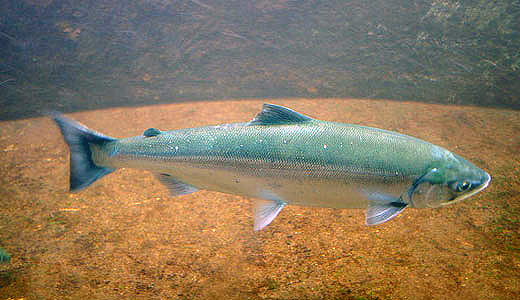
Drug-tainted U.S. waters are slowly but surely affecting fish in the most negative of ways. Traces of anti-anxiety drugs in the water make fish anti-social and aggressive. Other pharmaceuticals give them voracious appetites. It may all sound humorous, but these are actually the effects of a larger water-pollution problem that is disturbing and endangering fish and the dynamics of their environment, according to a study by Swedish researchers at Umea University and an analysis by the U.S. Geological Survey.
“I think people are starting to understand that pharmaceuticals are environmental contaminants,” said U.S. Geological Survey researcher Dana Kolpin, noting that medicines that seep into water can alter both fish biology and behavior.
Drugged fish, said experts, were less likely to be sociable, and that solitary trait would lead to them becoming easier targets for larger fish. Those larger fish, in turn, could then become overpopulated.
“We know that in a predator-prey situation, increased boldness and activity combined with decreased sociality means you’re going to be somebody’s lunch quite soon,” Gregory Moller, a toxicologist at the University of Idaho and Washington State University, told the Associated Press. “It removes the natural balance.”
In addition to deliberate dumping of drugs into water, including when people flush medicines down the toilet, pharmaceuticals enter rivers and streams after passing through people’s bodies in an un-metabolized form. Those traces then pass through water treatment plants, which are not equipped to specifically remove them from the water; thus, the water – still drug-tainted – flows into rivers and streams.
Another major problem is the un-metabolized drug traces that pass through the bodies of factory farm animals, which are purposely pumped with steroids and chemicals. That, too, goes into the water.
It’s a toxic cycle, experts say, and it needs to be broken.
According to a 2008 report by the Associated Press, the drinking water of at least 51 million Americans carries low concentrations of common drugs, including antibiotics, sex hormones, and sedatives. Though the findings prompted activists and health advocates to call for more water testing and public disclosure, there has since been no legislation passed to rectify the issue.
The Swedish research team tested their findings by exposing an aquarium of fish to trace amounts of the anti-anxiety drug oxazepam (in a concentration similar to that typically found in U.S. waters). The exposed fish moved more swiftly, became extremely aggressive, fed more frequently, hid less, and tended to stray off on their own. Some of the fish behaved “like a person diagnosed with ADHD,” said researcher Micael Jonsson. “They become asocial and more active than they should be.”
Biological changes, moreover, included male fish taking on female characteristics.
Researcher Tomas Brodin believes this is turning into a major problem that is affecting not only U.S. waters, but those around the world as well. “We’re finding these [drug] concentrations all over the world, and it’s quite possible or probable that these behavioral effects [in fish] are taking place as we speak,” he said.
Though people might be slightly affected if they consumed enough of these fish, the research team maintained that it was highly unlikely that people would come to any harm or feel any significant effects. More worrying is what the pollution is doing to the fish themselves.
“These exposures may alter things like mating behavior or [the fish’s] ability to catch food – or its ability to avoid being eaten,” said Anne McElroy, a water toxins specialist at Stony Brook University in New York. “Over time, that could really affect a population.”
The experts saw two methods of responding to this problem. The first would be to push treatment facilities to come up with better ways to purge drugs from the water. The second would be to urge pharmaceutical companies to “greenify” their drugs by making them more degradable.
“We recognize this as a growing concern and we’re taking it very seriously,” said EPA assistant administrator for water Benjamin Grumbles.
EPA scientist Christian Daughton added, “People think that if they take a medication, their body absorbs it and it disappears, but of course that’s not the case.”
And of course, said the agency, even if eating fish with drug traces isn’t going to hurt people, the water itself still might – especially when those pharmaceutical levels increase further in a few years’ time. “It brings a question to people’s minds,” remarked EPA research biologist Vickie Wilson. “If the fish were affected, might there be a potential problem for humans?”
Photo: Flickr










